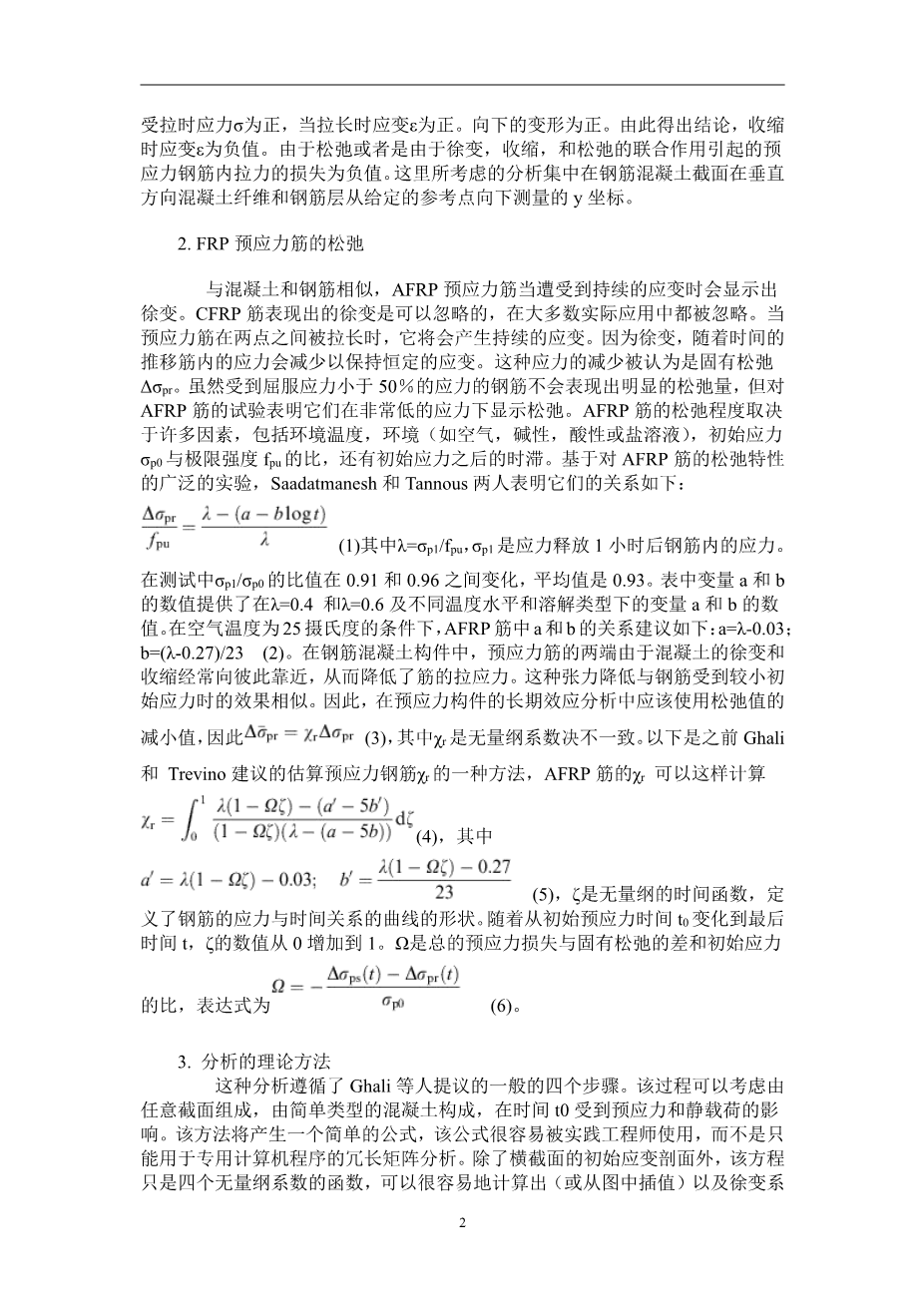Construction and Building Materials
Volume 21, Issue 5 , May 2007, Pages 1052-1060
An approach to determine long-term behavior of concrete members prestressed with FRP tendons
Abstract
The combined effects of creep and shrinkage of concrete and relaxation of prestressing tendons cause gradual changes in the stresses in both concrete and prestressing tendons. A simple method is presented to calculate the long-term prestress loss and the long-term change in concrete stresses in continuous prestressed concrete members with either carbon fiber reinforced polymer (CFRP) or aramid fiber reinforced polymer (AFRP) tendons. The method satisfies the requirements of equilibrium and compatibility and avoids the use of any empirical multipliers. A simple graph is proposed to evaluate the reduced relaxation in AFRP tendons. It is shown that the prestress loss in FRP tendons is significantly less than that when using prestressing steel, mainly because of the lower moduli of elasticity of FRP tendons. The long-term changes in concrete stresses and deflection can be either smaller or greater than those of comparable girders prestressed with steel tendons, depending on the type of FRP tendons and the initial stress profile of the cross-section under consideration.
Keywords: Creep; FRP; Long-term; Prestress loss; Prestressed concrete; Relaxation; Shrinkage
The use of fiber reinforced polymer (FRP) tendons as prestressing reinforcements have been proposed in the past decade and a few concrete bridges have already been constructed utilizing fiber reinforced polymer (FRP) tendons. Compared to conventional steel prestressing tendons, FRP tendons have many advantages, including their noncorrosive and nonconductive properties, lightweight, and high tensile strength. Most of the research conducted on concrete girders prestressed with FRP tendons has focused on the short-term behavior of prestressed members; research findings on the long-term behavior of concrete members with FRP tendons are scarce in the literature. The recent ACI Committee report on prestressing concrete structures with FRP tendons (ACI 440.4R-04 [1]) has pointed out that: “Research on the long-term loss of prestress and the resultant time-dependent camber/deflection is needed …” Most of the research and applications of FRP tendons in concrete structures have adopted either carbon fiber reinforced polymer (CFRP) or aramid fiber reinforced polymer (AFRP) tendons. The use of glass fiber reinforced polymers (GFRP) has mostly been limited to conventional reinforcing bars due to their relatively low tensile strength and poor resistance to creep. Therefore, this paper focuses on prestressed members with either CFRP or AFRP tendons.
Creep and shrinkage of concrete, and relaxation of prestressing tendons, cause long-term deformations in concrete structures. While it is generally accepted that long-term losses do not affect the ultimate capacity of a prestressed concrete member, a reasonably accurate prediction of these losses is important to ensure satisfactory performance of concrete structures in service. If prestress losses are underestimated, the tensile strength of concrete can be exceeded under full service loads, causing cracking and unexpected excessive deflection. On the other hand, overestimating prestress losses can lead to excessive camber and uneconomic design.
The error in predicting the long-term prestress losses can be due to: (1) inaccuracy in estimation of the long-term material characteristics (creep and shrinkage of concrete and relaxation of prestressing tendons); and (2) inaccuracy of the method of analysis used. The objective of this paper is to address the second source of inaccuracy by presenting a simple analytical method to estimate the time-dependent strains and stresses in concrete members prestressed with FRP tendons. The method satisfies the requirements of equilibrium and compatibility and avoids the use of empirical equations, which in general show loss in accuracy to enable generality. The inaccuracy in the material characteristics used can be mitigated by varying the input material parameters and establishing upper and lower bounds on the analysis results.
For the purpose of this paper, and to avoid confusion, a consistent sign convention is used. Axial force N is positive when it is tensile. Bending moment, M, that produces tension at the bottom fiber of a cross section and the associated curvature ψ are positive. Stress, σ, and strain, ε</em 剩余内容已隐藏,支付完成后下载完整资料 英语译文共 5 页,剩余内容已隐藏,支付完成后下载完整资料 资料编号:[467962],资料为PDF文档或Word文档,PDF文档可免费转换为Word



